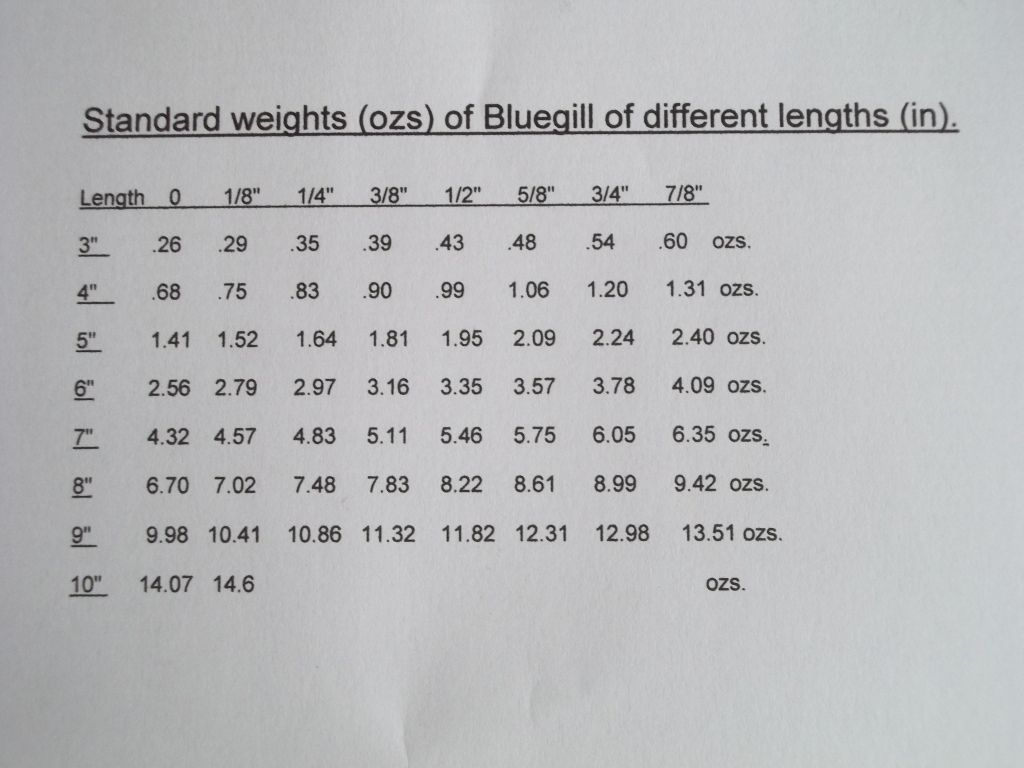Yes, this fish had a larger gape than a BG. As far as the fin coloration goes, I have noticed that on this particular variation of HBG, the yellow/orange fin coloration becomes much more prominent during spawning, and to an extent, as the fish gets older.
Jwwann, relative weight, (Wr or RW), is determined by weighing and measuring your fish, then comparing it against a relative weight chart, in order to get some idea of the fish's condition.
This is my favorite Wr chart for Bluegill, as it lets me begin checking the condition of my fish at a smaller size. This one is courtesy of Bruce:

The length of the fish, in inches, is given in whole numbers along the left edge, while it's further divided into 1/8" increments along the top...My fish was 6" even, which works out to a standard weight of 2.56 ozs. In another example, a fish 8.5" long would have a standard weight of 8.22 ozs.. Once you have the weight of your fish, AND the standard weight from the chart, you divide the weight of your BG by the standard weight, and multiply by 100. That gives you the relative weight.
The only problem with this chart, is the fact it only goes to 10", which is a problem if you have larger BG. (Which, in my opinion, is an excellent problem to have) For larger BG, I use the chart from the July/Aug. issue of PondBoss, circa 2006. This was part of a three part article written by Bruce Condello, Bill Cody, and Cecil Baird on raising trophy male BG. It's what got me all excited about managing for big BG, and I think those back issues belong in every BG enthusiasts library.